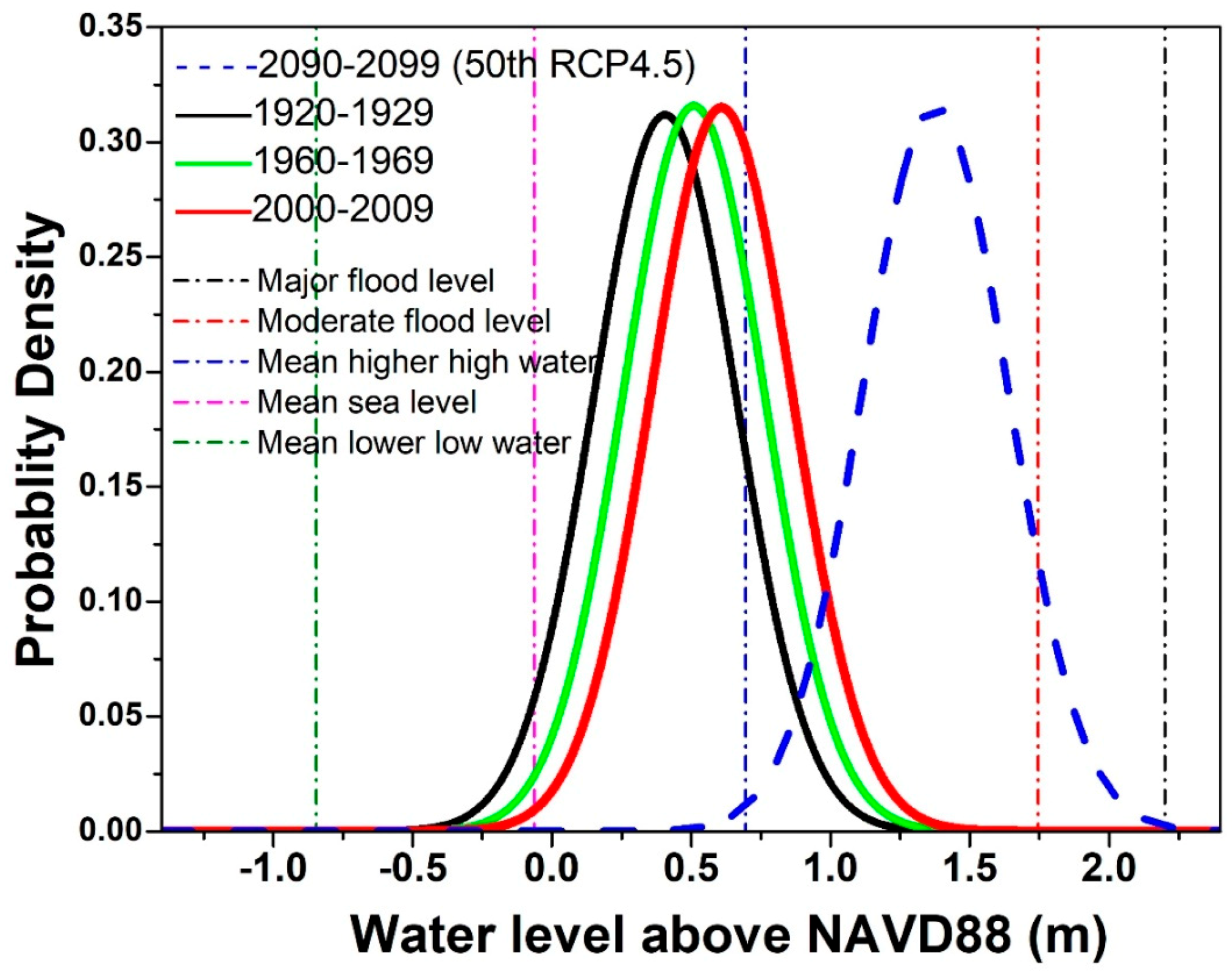 Abstract
Abstract
Gated storm surge barriers are being studied by the United States Army Corps of Engineers (USACE) for coastal storm risk management for the New York City metropolitan area. Surge barrier gates are only closed when storm tides exceeding a specific “trigger ” water level might occur in a storm. Gate closure frequency and duration both strongly influence the physical and environmental effects on enclosed estuaries. In this paper, we use historical observations to represent future storm tide hazard, and we superimpose local relative sea-level rise (SLR) to study the potential future changes to closure frequency and duration. We account for the effects of forecast uncertainty on closures, using a relationship between past storm surge and forecast uncertainty from an operational ensemble forecast system. A concern during a storm surge is that closed gates will trap river streamflow and could cause a new problem with trapped river water flooding. Similarly, we evaluate this possibility using historical data to represent river flood hazard, complemented by hydrodynamic model simulations to capture how waters rise when a hypothetical barrier is closed.
The results show that SLR causes an exponential increase of the gate closure frequency, a lengthening of the closure duration, and a rising probability of trapped river water flooding. The USACE has proposed to prevent these SLR-driven increases by periodically raising the trigger water level (e.g., to match a prescribed storm return period). However, this alternative management approach for dealing with SLR requires waterfront seawalls to be raised at a high, and ongoing, additional future expense. For seawalls, costs and benefits will likely need to be weighed on a neighborhood-by-neighborhood basis, and in some cases retreat or other non-structural options may be preferable.
About this article
This open-access article, published in the Journal of Marine Science and Engineering, summarizes results of analyses conducted as part of a 2018 catalyst project. Project workshops identified these analyses as high priority needs to help agencies better understand the potential performance and ecological impacts of a possible surge barrier.
Chen Z., P. Orton, and T. Wahl. 2020. Storm Surge Barrier Protection in an Era of Accelerating Sea-Level Rise: Quantifying Closure Frequency, Duration and Trapped River Flooding. Journal of Marine Science and Engineering 8(9): 725. Available at: https://doi.org/10.3390/jmse8090725